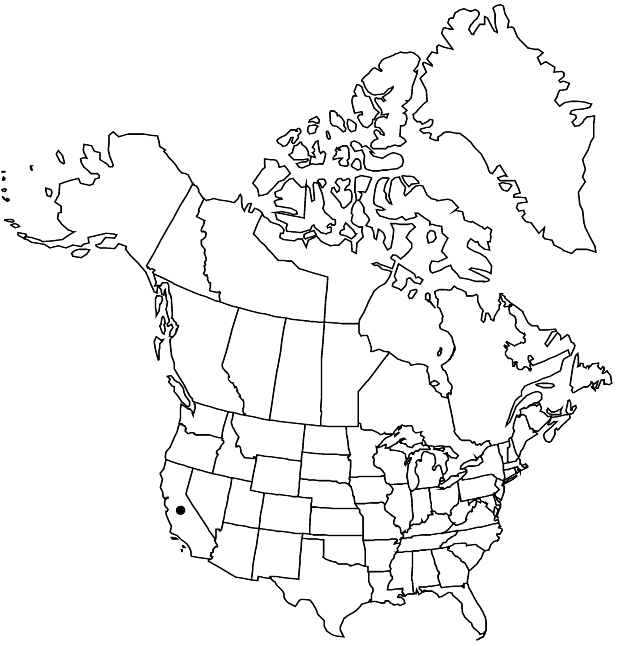Jepsonia heterandra
Bull. Torrey Bot. Club 32: 201. 1905 ,.
Caudices branched, flat. Leaves 2–3. Inflorescences diffuse, (3–)4–17(–25)-flowered; bracts scalelike; peduncle pink or reddish, drying tan or reddish, branched near middle, 3–23 cm. Flowers: hypanthium campanulate, 1.5–3 mm, length to 1.5 times sepals; sepals pink, 1.3–2 mm, base flattened, glandular-viscid; petals withering, alternate with sepals, distinct, white with deep pink veins, 3.5–6 mm. Pollen bluish or cream. Capsules whitish green or red with red striations, ovoid or ellipsoid, beaks divergent. Seeds light brown. 2n = 14.
Phenology: Flowering Sep–Nov.
Habitat: Crevices, slate outcrops, rocky slopes
Elevation: 50-600 m
Discussion
Of conservation concern.
Jepsonia heterandra is relatively uncommon and is apparently restricted to crevices and alluvium of very specific rock types. It has been suggested (R. Ornduff 1969b) that both the mineral content and texture of the substrate influence the distribution of this species. Heterostyly in the genus was first recognized by Eastwood in her description of this species.
